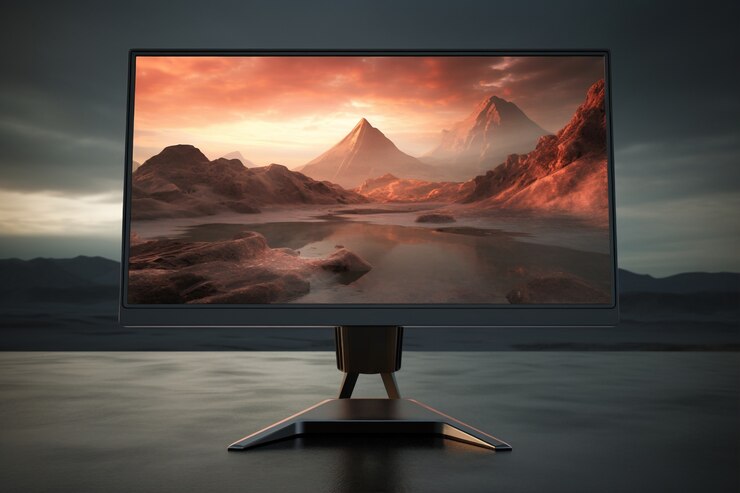
Discover essential details about 65 inch TV dimensions, including width, height, depth, and more. Learn how to fit your TV perfectly into any space with this comprehensive guide.
Introduction
When considering a new television, especially one as substantial as a 65-inch model, understanding the precise dimensions is crucial for proper placement and integration into your living space. The “65 inch TV dimensions” encompass more than just the diagonal screen size; they include the width, height, and depth of the TV, along with any stand or mount considerations. Transitioning from one TV to another can be daunting, especially when determining how it will fit into your existing setup. Consequently, knowing these dimensions allows you to make informed decisions about your purchase and ensures that your TV complements your space perfectly. By delving into the details of “65 inch TV dimensions,” you can optimize your viewing experience and avoid common placement pitfalls.
The Importance of Accurate Measurements
Understanding the “65 inch TV dimensions” is not merely about knowing the screen size; it involves appreciating how the TV’s physical characteristics impact your room’s layout. Accurately measuring the width, height, and depth of the TV ensures it fits seamlessly into your entertainment center or wall mount. Furthermore, these measurements help in planning cable management and speaker placement, ultimately contributing to a clutter-free and aesthetically pleasing setup. Transitioning your focus from just screen size to the actual dimensions provides a comprehensive understanding, allowing for a better fit and more enjoyable viewing experience.
Width of a 65 Inch TV
The width of a 65-inch TV is one of the most critical dimensions to consider when planning your setup. On average, a 65-inch TV measures approximately 56.7 inches (144 cm) in width. This dimension is measured from the left edge to the right edge of the screen, excluding any bezels or stands. Understanding this width is essential when determining if your TV will fit within your entertainment unit or on a specific wall space. Transitioning from smaller TVs, you’ll notice that a 65-inch model requires more space, which can significantly impact your room layout and design.
Height of a 65 Inch TV
The height of a 65-inch TV typically measures around 32 inches (81 cm), but this can vary slightly depending on the model and design. This measurement is taken from the bottom edge to the top edge of the screen, excluding the stand or any mounting hardware. Knowing the height of your TV helps you plan its placement in relation to other furniture and fixtures in the room. For instance, if you’re mounting the TV on the wall, you need to ensure that the height allows for comfortable viewing without straining your neck. Transitioning to a larger TV involves reassessing how it fits into your room’s vertical space.
Depth of a 65 Inch TV
The depth of a 65-inch TV varies depending on the model and design. Typically, the depth ranges from 2.5 to 3.5 inches (6.4 to 8.9 cm). This dimension is measured from the front of the TV screen to the back, including any protrusions or bulges for connectors and ventilation. The depth becomes particularly relevant when determining the TV’s fit on a stand or within a cabinet. Transitioning from older, bulkier models to newer, slimmer designs, you’ll find that the depth has decreased, allowing for a more streamlined appearance and easier installation.
Stand Dimensions for a 65 Inch TV
When considering the “65 inch TV dimensions,” it’s important to account for the stand if you plan to place your TV on a piece of furniture rather than mounting it on the wall. The stand’s dimensions include its width and depth, which are often wider than the TV itself to provide stability. The height of the stand also affects the overall viewing height. Transitioning to a new stand might require adjustments in your room layout to ensure that the TV is at an optimal viewing height and the stand complements the room’s aesthetic.

Mounting a 65 Inch TV: Wall and VESA Specifications
Mounting a 65-inch TV on the wall requires understanding both the wall space and VESA (Video Electronics Standards Association) specifications. The VESA pattern, which denotes the distance between the mounting holes on the back of the TV, typically ranges for 65-inch models. Common patterns include 400×400 mm or 600×400 mm. Knowing the VESA pattern helps in selecting the right wall mount bracket. Transitioning to wall mounting can save space and offer a sleek look, but it requires careful measurement to ensure proper placement and weight distribution.
Cable Management for a 65 Inch TV
Effective cable management is a crucial aspect of setting up a 65-inch TV. The dimensions of the TV, including its depth and stand configuration, influence how cables are routed and hidden. Many modern TVs come with cable management systems or ports designed to keep cables organized. Transitioning from older setups, where cables might have been more visible, you can now achieve a cleaner look by using cable management solutions that complement your TV’s dimensions and overall design.
Room Layout Considerations for a 65 Inch TV
When integrating a 65-inch TV into your room, considering its dimensions in relation to the overall room layout is vital. The width, height, and depth of the TV impact how it interacts with other furniture and decor. Transitioning to a larger TV often requires rearranging furniture to ensure an optimal viewing distance and angle. Additionally, the TV’s dimensions influence how much space is left for other elements in the room, such as artwork, lighting, and storage.
Viewing Distance and Optimal Placement
The dimensions of a 65-inch TV also affect the recommended viewing distance to ensure an immersive experience. Generally, the ideal viewing distance for a 65-inch TV is between 8 to 13 feet (2.4 to 4 meters) from the screen. Transitioning to a larger TV means adjusting your seating arrangement to match this distance, enhancing both comfort and image clarity. Understanding how the TV’s dimensions fit into this formula helps in achieving the best viewing experience.
Comparing 65 Inch TV Dimensions with Other Sizes
To appreciate the dimensions of a 65-inch TV fully, it’s useful to compare them with other TV sizes. For instance, a 55-inch TV is smaller in width, height, and depth, which can influence how it fits into your space. Transitioning between different sizes helps in understanding the impact of a 65-inch TV and how it compares in terms of room fit and viewing experience. By comparing sizes, you can better gauge if a 65-inch TV meets your needs or if another size might be more appropriate.
Design Variations in 65 Inch TVs
Design variations in 65-inch TVs can affect their dimensions. Different models offer various bezel sizes, stand designs, and screen technologies. For instance, an ultra-thin LED TV will have different depth measurements compared to an older plasma model. Transitioning to a new design involves understanding these variations and how they impact the TV’s overall dimensions and your room setup.
Choosing the Right Furniture for a 65 Inch TV
Selecting furniture that accommodates a 65-inch TV involves understanding its dimensions in relation to the furniture’s size. The width and depth of the TV dictate the size of the TV stand or console required. Transitioning to larger furniture that matches the TV’s dimensions can enhance the room’s appearance and ensure stability. Properly sized furniture not only supports the TV but also complements the room’s overall design.
Impact of TV Frame Thickness on Dimensions
The thickness of the TV frame, or bezel, affects the overall dimensions of the TV. Slimmer frames provide a modern look and reduce the TV’s depth, while thicker frames may offer additional features or design elements. Transitioning to a TV with a different frame thickness can influence how the TV fits into your space and how it interacts with other decor elements.
Integrating a 65 Inch TV into Small Spaces
Fitting a 65-inch TV into a small room requires careful consideration of its dimensions. The width, height, and depth need to be balanced with the available space to avoid overwhelming the room. Transitioning to a larger TV in a small space might necessitate creative placement solutions, such as wall mounting or using compact furniture, to ensure a harmonious integration.

Adjusting for TV Dimensions in Multi-Use Rooms
In multi-use rooms where the TV serves various functions, understanding its dimensions helps in optimizing its placement. The TV’s width, height, and depth should be considered alongside other elements in the room, such as seating arrangements and workspaces. Transitioning to a larger TV might require adjustments to accommodate its size while maintaining functionality in the room.
Future-Proofing with a 65 Inch TV
When investing in a 65-inch TV, considering future needs and space adjustments is essential. The dimensions of the TV influence how it fits into future room changes or upgrades. Transitioning to a larger TV with an eye on future room developments can ensure that your investment remains relevant and functional over time.
Common Mistakes When Measuring TV Dimensions
Misjudging TV dimensions can lead to various issues, such as poor fit or obstructed viewing angles. Common mistakes include not accounting for the stand’s dimensions or neglecting to measure the space for cables and connectors. Transitioning from these errors involves double-checking measurements and ensuring that all aspects of the TV’s dimensions are considered.
Understanding TV Box Dimensions
When purchasing a 65-inch TV, the dimensions of the box are also important. The box size includes extra space for padding and packaging materials. Transitioning to a new TV involves accounting for the box dimensions when transporting or unboxing the TV to ensure that it fits through doors and tight spaces.
Comparing Different Brands and Models
Different brands and models of 65-inch TVs offer varying dimensions and features. Comparing these options helps in selecting a TV that meets your spatial requirements and preferences. Transitioning from one brand to another might reveal differences in dimensions that could affect the fit and overall setup in your room.
Conclusion
Understanding the “65 inch TV dimensions” is crucial for optimizing your viewing experience and integrating the TV seamlessly into your space. By considering the width, height, depth, and other factors, you can ensure that your TV fits well within your room layout and enhances your entertainment setup. Transitioning to a new TV involves careful measurement and planning to achieve the best results.





